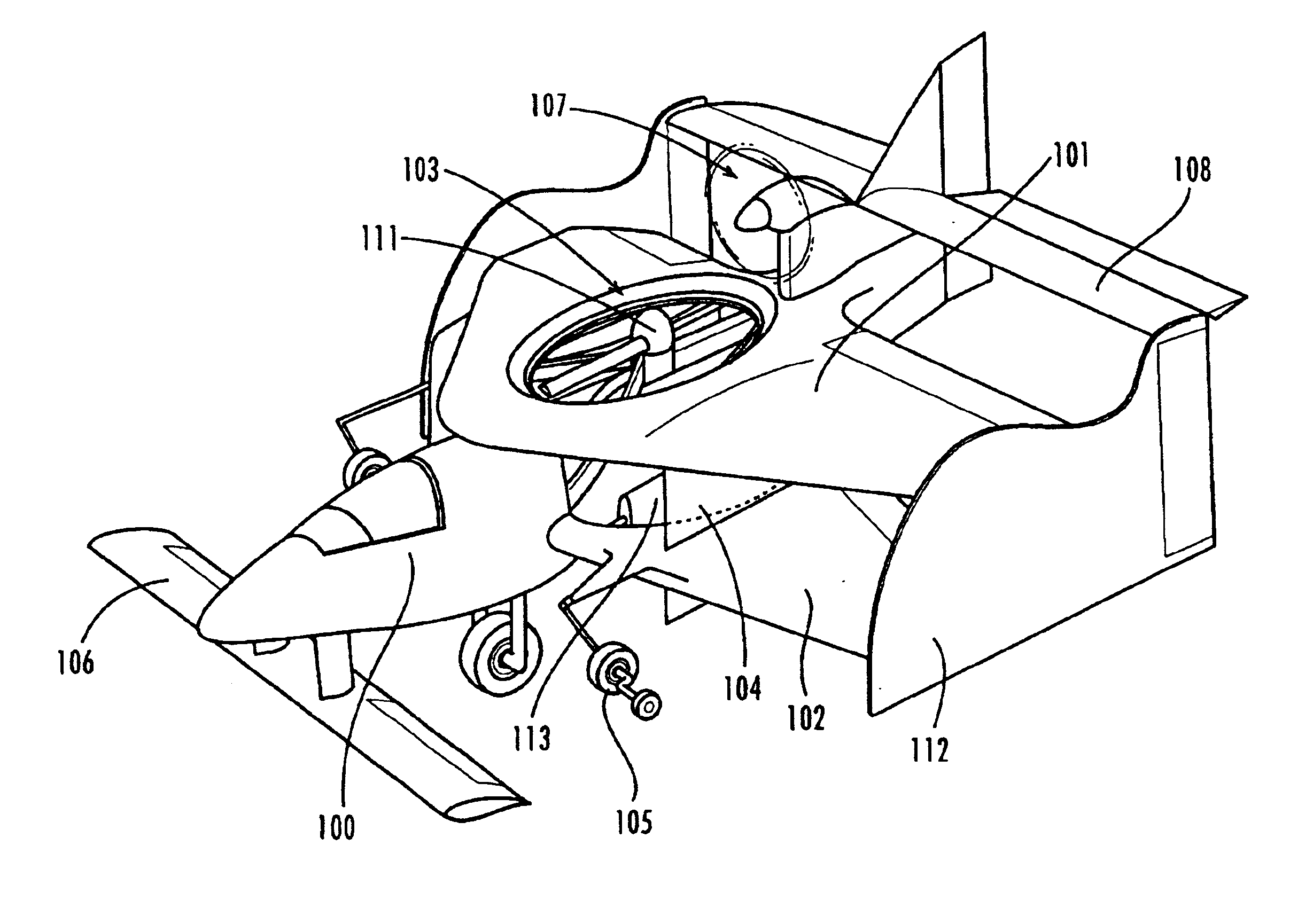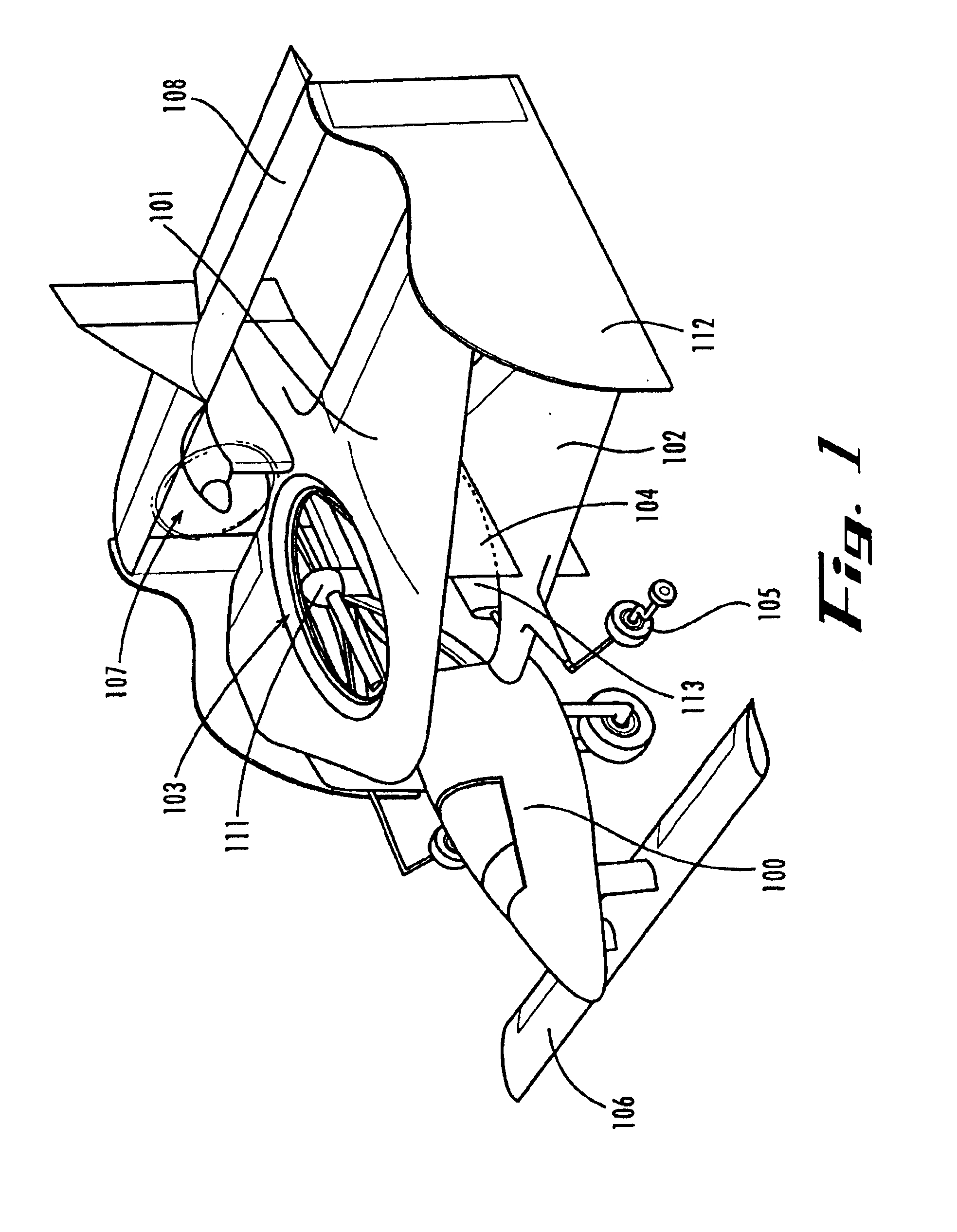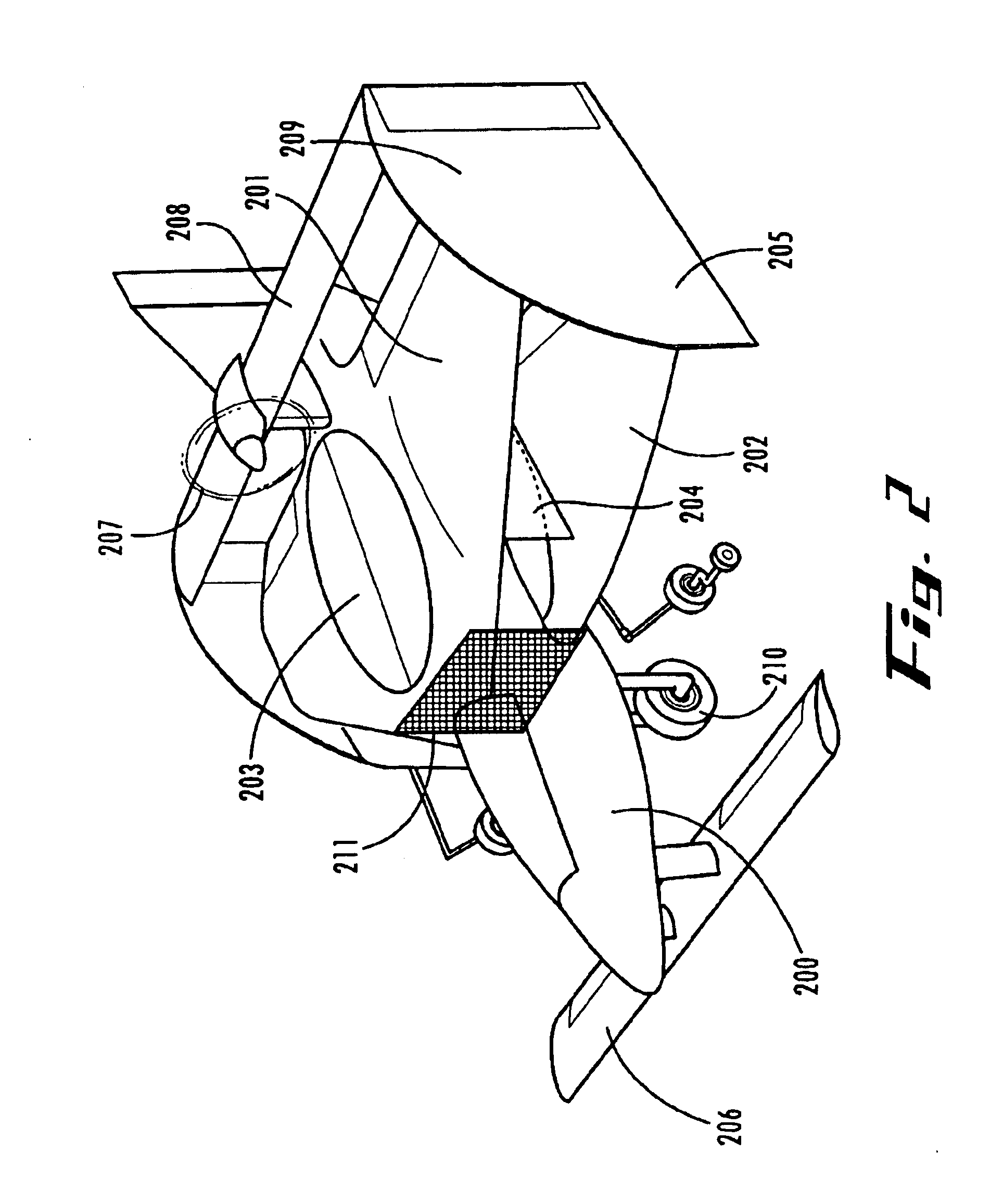V/STOL biplane aircraft
a biplane aircraft and aircraft technology, applied in the direction of vertical landing/take-off aircraft, aircraft navigation control, transportation and packaging, etc., can solve the problems of low airflow velocity of ducted fan outlet, poor flight stability characteristics, and high initial and maintenance costs of gyrocopters with prerotors. , to achieve the effect of reducing the airflow velocity of the ducted fan outlet and reducing the load of the disk
- Summary
- Abstract
- Description
- Claims
- Application Information
AI Technical Summary
Benefits of technology
Problems solved by technology
Method used
Image
Examples
Embodiment Construction
Referring to FIG. 2, the fuselage, 200, consists of three distinct sections. These are the front fuselage section, the middle fuselage section and the rear fuselage section. These three sections are indicated as 1 for the front fuselage section, 2 for the middle fuselage section and 3 for the rear fuselage section.
Weight and Balance Considerations
FIG. 3 illustrates a side view of another version of said jyrodyne aircraft, with the center of gravity vector depicted by arrow 4, at a position directly below the center of combined wing lift from the two biplane wings, arrow 8, which is called the jyrodyne center of lift. Said vector at arrow 4, also resides at the same longitudinal position as the ducted fan rotor axis. In stable hover mode, this point also resides at the jyrodyne center of gravity. Thus, this vendor resides at the combined location of the jyrodyne center or lift and gravity, called the jyrodyne center of lift / gravity. The ducted fan rotor hub is illustrated just below ...
PUM
 Login to View More
Login to View More Abstract
Description
Claims
Application Information
 Login to View More
Login to View More - R&D
- Intellectual Property
- Life Sciences
- Materials
- Tech Scout
- Unparalleled Data Quality
- Higher Quality Content
- 60% Fewer Hallucinations
Browse by: Latest US Patents, China's latest patents, Technical Efficacy Thesaurus, Application Domain, Technology Topic, Popular Technical Reports.
© 2025 PatSnap. All rights reserved.Legal|Privacy policy|Modern Slavery Act Transparency Statement|Sitemap|About US| Contact US: help@patsnap.com



